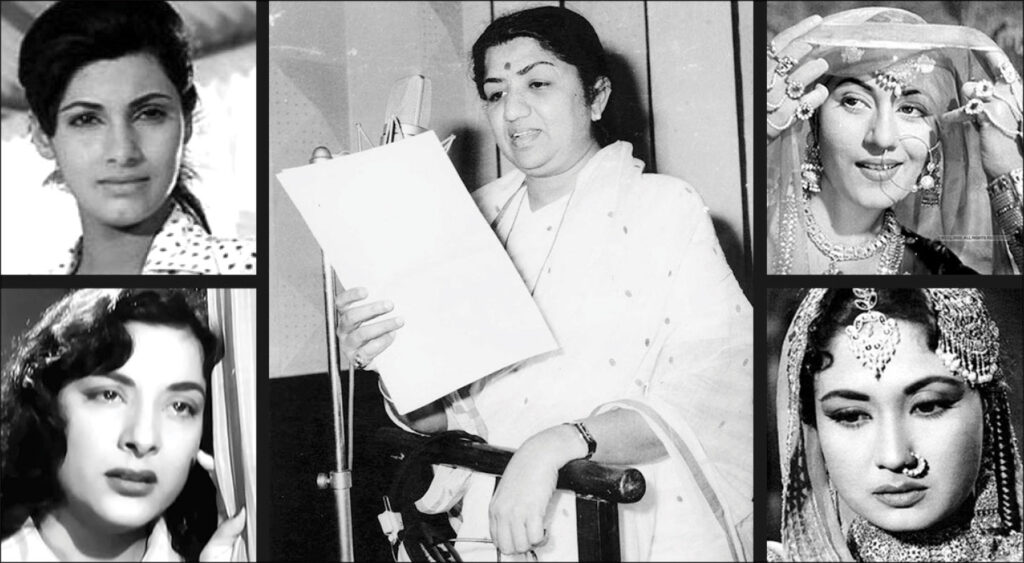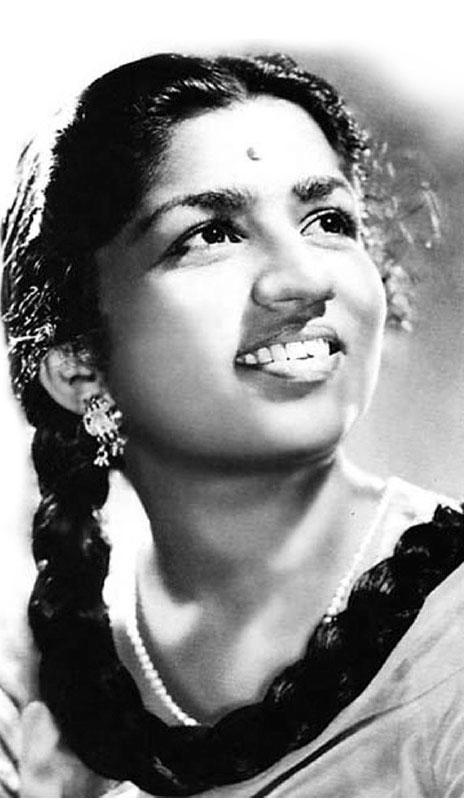In 1964, when Mehboob Khan, producer-director of Mother India, was seriously ill at a Los Angeles hospital, his wife called Lata Mangeshkar from there. Khan snatched the phone and said, “Lata, I am very ill. Can you please sing Rasik balma for me?” Moist-eyed, Lata sang this song of magical allure from the 1956 Raj Kapoor-Nargis starrer Chori Chori on the phone. A week later, he called again with the same request.
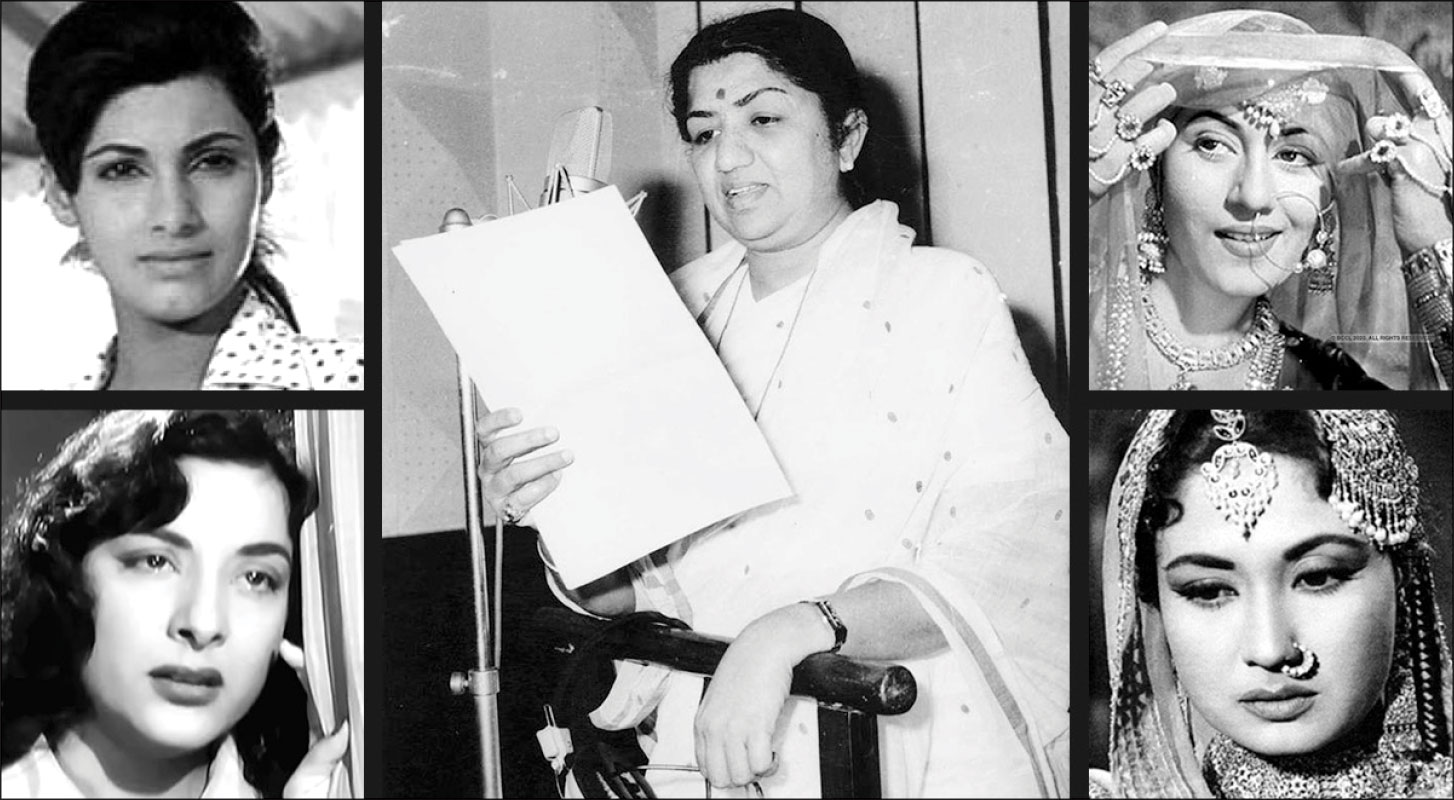
Lata’s phone calls didn’t save the dying movie mogul, but she had the satisfaction of providing him solace and musical pleasure in his last days.
Lata’s voice can soothe, titillate, electrify, seduce. If you listen to the songs of Barsaat, Anarkali, Mother India, Mughal-e-Azam, Guide or Abhimaan, you can hear Lata’s voice glide with elan from joy to anguish, from romantic longing to philosophical angst, from a celebration of life to a call of despair.
In the 1970s, it was said that only two voices were heard over All India Radio — Indira Gandhi and Lata Mangeshkar. Today you hear more voices — but Lata’s voice pours out from cell phones, computers, radios and TV sets thousands of times every day.
In the 1970s, it was said that only two voices were heard over All India Radio — that of Indira Gandhi and Lata Mangeshkar.
The woman who didn’t go to school, missed most of her childhood, never married, is the eternal empress of playback melody, having sung several thousand songs in 36 languages. She has been compared to Taj Mahal as an Indian brand, and has won more honours than anybody else in Indian cinema, including Bharat Ratna (2001); the Dadasaheb Phalke Award (1989); three national awards for best playback singer; six Filmfare Awards; and the French Knight of the Legion Award (the highest civilian honour in France). Piece de resistance…a French perfume is named after her!
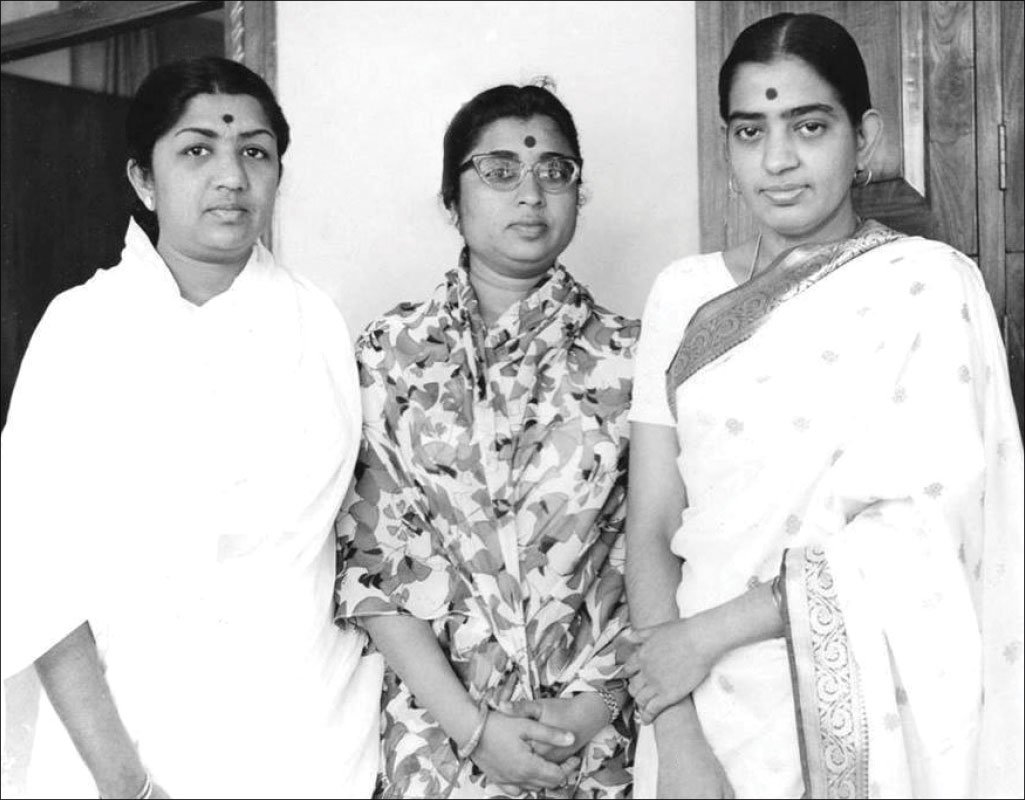
Shah Rukh Khan says he’s sorry that since he is a male, Lata will never sing for him. S D Burman said Lata is “the best antidote to regional chauvinism” — because everyone from Kashmir to Kanyakumari loves her songs. Says Javed Akhtar, “If you collect all the fragrance, all the moonlight, all the honey in the universe, their collective magic can’t create a voice like Lata’s.” Dilip Kumar remarked, “Lata resides in every one of us.”
Lata’s best songs
Lata’s songs bring back memories of some of the greatest moments of Indian cinema… the Raj Kapoor-Nargis movies of the 1950s; Meena Kumari in Baiju Bawra, Azad, Kohinoor; Madhubala in Amar, Tarana, Mughal-e-Azam; Nutan in Seema; Vyjayanthimala in Sangam, Gunga Jumna; Sadhana in Mere Mehboob, and a host of other actresses and movies.
When Lata sings a When Lata sings a sad song for me, I don’t need glycerine to shed tears.
– Actress Nargis
Coming to her best songs, how does one pick a few from the thousands of radiant gems she has sung? Here’s a personal selection from different moods and genres — duets, romantic, joyous and sad songs.
Duets
- Pyar hua ikrar hua — Lata and Manna Dey in Shri 420 (composer: Shankar-Jaikishen)
- Jaag dard ishq jaag — Lata and Hemant in Anarkali
(C Ramachandra) - Nain so nain — Lata and Hemant in Jhanak Jhanak Payal Baaje (Vasant Desai)
- Aja sanam — Lata and Rafi, Chori Chori (Shankar-Jaikishen)
- Hum tum ek kamre me band
ho — Lata and Shailendra Singh in Bobby (Laxmikant-Pyarelal)
Many of Lata’s duets are emotional scorchers, and among the richest treasures of Hindi film music. All of her duet partners — be it Rafi, Kishore, Mukesh, Manna Dey, Hemant Kumar — enjoyed singing with her, exchanging notes and tips and banter, and witnessing her professionalism and talent.

Romantic songs
- Mujhe kisise pyar ho gaya from Barsaat (composer: Shankar-Jaikishen)
- Pyar kiya to darna kya from Mughal-e-Azam (Naushad)
- Nainon me badra chaye — Mera Saaya (Madan Mohan)
- Do hanson ka joda — Gunga Jumna (Naushad)
- Bindiya chamkegi — Do Raaste (Laxmikant-Pyarelal)
Lata’s romantic songs are pure gold. Those of the 1950s and 1960s are ageless, enchanting, everlasting odes to love. The more modern ones crackle with electric intensity.
Joyous songs
- Woh chand khila — Anari (Shankar-Jaikishen)
- Aaj phir jeene ki tamanna hai — Guide (S D Burman)
- Jiya jale jaan jale — Dil Se (A R Rahman)
- Didi tera devar deewana — Hum Aapke Hain Kaun (Ram Lakshman)
- O Sajana — Parakh (Salil Choudhury)
Lata’s joyous songs have a compelling beat, they radiate positivism, sparkle with banter or mischief.
Sad songs
- Aaja re ab mera dil pukara — Aah (Shankar-Jaikishen)
- Mera dil ye pukare aaja — Nagin (Hemant Kumar)
- Dua kar gham-e-dil — Anarkali (C Ramachandra)
- Nagari nagari dware dware —Mother India (Naushad)
- Megha chhaye aadhi raat —Sharmilee (S D Burman)
Lata’s sad songs are like beautiful paintings brushed with the colours of anguish. They haunt you forever. Suffused with sorrow, they are fragrant with sweetness. Your heart bleeds for the heroines whose pain she articulates so melodiously. Nargis said, “When Lata sings a sad song for me, I don’t need glycerine to shed tears.”
Surprisingly, Lata considers the lyric (rather than the tune) to be the most important element of a song.
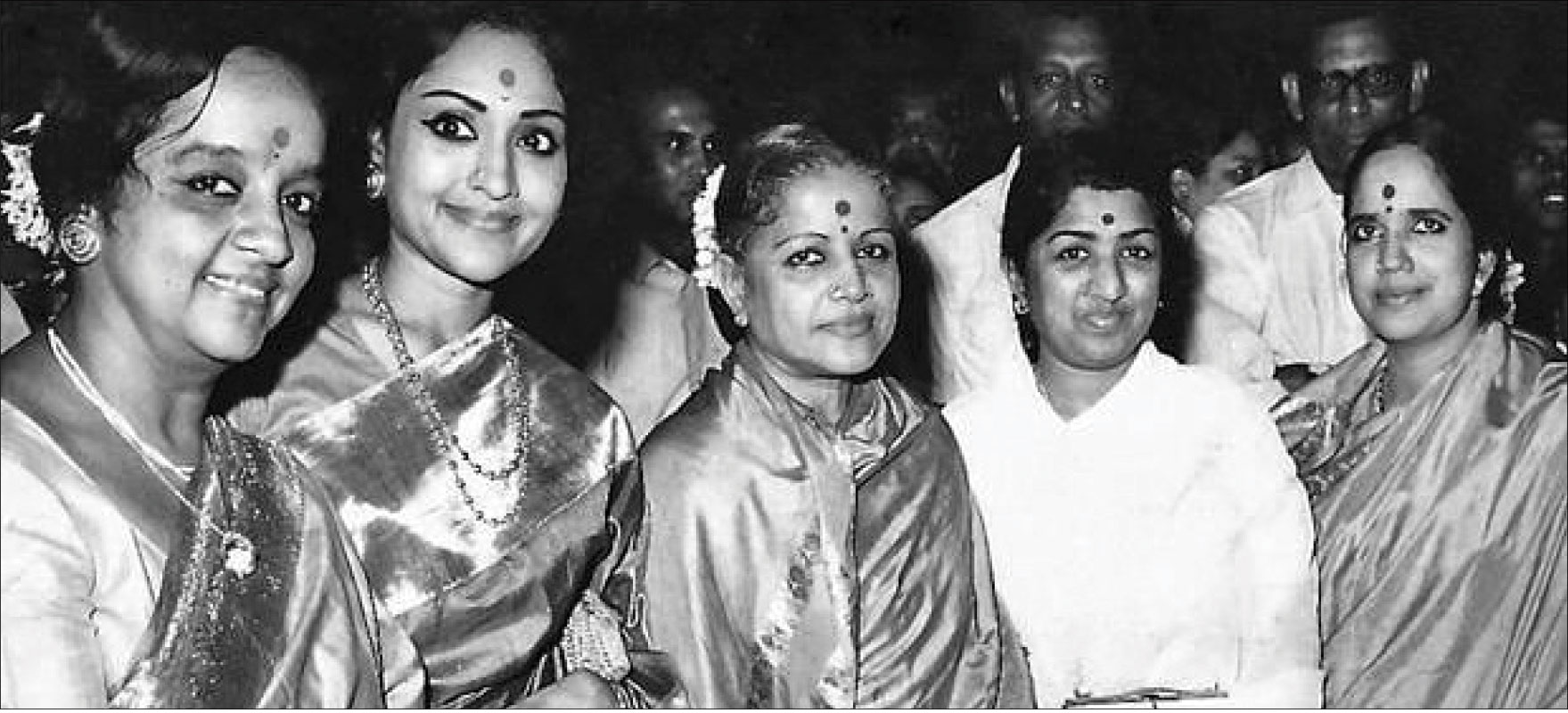
The Lata phenomenon
Here I try to decode the Lata phenomenon
- Her voice. There is nothing it can’t do. And it has never lost its pristine quality. Said Bade Ghulam Ali Khan, “Kambakth, kabhi besur nahi hoti (She never sings out of tune).” Composer Ehsaan Noorani pointed out that Lata was a soprano who could sing in three octaves, while other singers at best managed two. She could give a song depth like none else. No wonder every actress clamoured for Lata, and she acquired a vice-like grip on the music industry.
- Her musical knowledge, memory and grasp of the subtleties of melody and tune are all awesome. Mnna Dey recalls that once he and Lata were to sing a classical duet for Anil Biswas and needed a seven-day rehearsal. Lata took all of one day to rehearse the song and sing it better than him. In 1977, she returned from a long foreign tour to record a song for Raj Kapoor’s Satyam Shivam Sundaram. Composers Laxmikant-Pyarelel hummed out the outlines of the theme song for about 10 minutes. That’s all she needed for the recording. The resulting song was a chartbuster.
- She was an incredibly hard worker and learner, absorbing anything new like a sponge. She learned breath control from Anil Biswas and voice modulation from both Ghulam Haider and Naushad. She engaged a maulvi to teach her Urdu diction. This was because Dilip Kumar once remarked in Lata’s presence that the Urdu diction of Maharashtrians exuded the flavour of dal chawal. Lata was hurt and ensured that her Urdu pronunciation was impeccable.
- A perfectionist, she took pains to study the song situation, screen character and the actress for each song. When Lata sang for Madhubala or Meena Kumari, she sounded like them. At 45, she sang for 15-year-old Dimple Kapadia in Bobby and her voice sounded so young. At 66, she sang for Kajol in Dilwale Dulhaniyan le Jayenge and projected the ebullience of a 20-year-old.
A poignant childhood
Lata’s father Master Dinanath Mangeshkar, a much-respected classical singer and stage artist, from whom she heard devotional and classical music in childhood. On one occasion, she found her father’s pupil singing out of tune and corrected him. She was just five! Dinanath heard this, and told his wife: “We have a singer at home. ” He started teaching Lata then.
If you collect all the fragrance, all the moonlight, all the honey in the universe, their collective magic can’t create a voice like Lata’s.
– Poet Javed Akhtar
Film songs were banned at home — K L Saigal was the only exception. Lata would hum Saigal songs all the time, and as a kid, once announced that she would marry Saigal. “By the time you grow up, he will be too old,” her father remarked. “Never mind, I’ll still marry him,” she said. But Lata never met her idol. When she switched on her newly acquired radio for the first time, the first news she heard was of Saigal’s death. Devastated and distraught, she returned the radio to the shop where she had bought it.
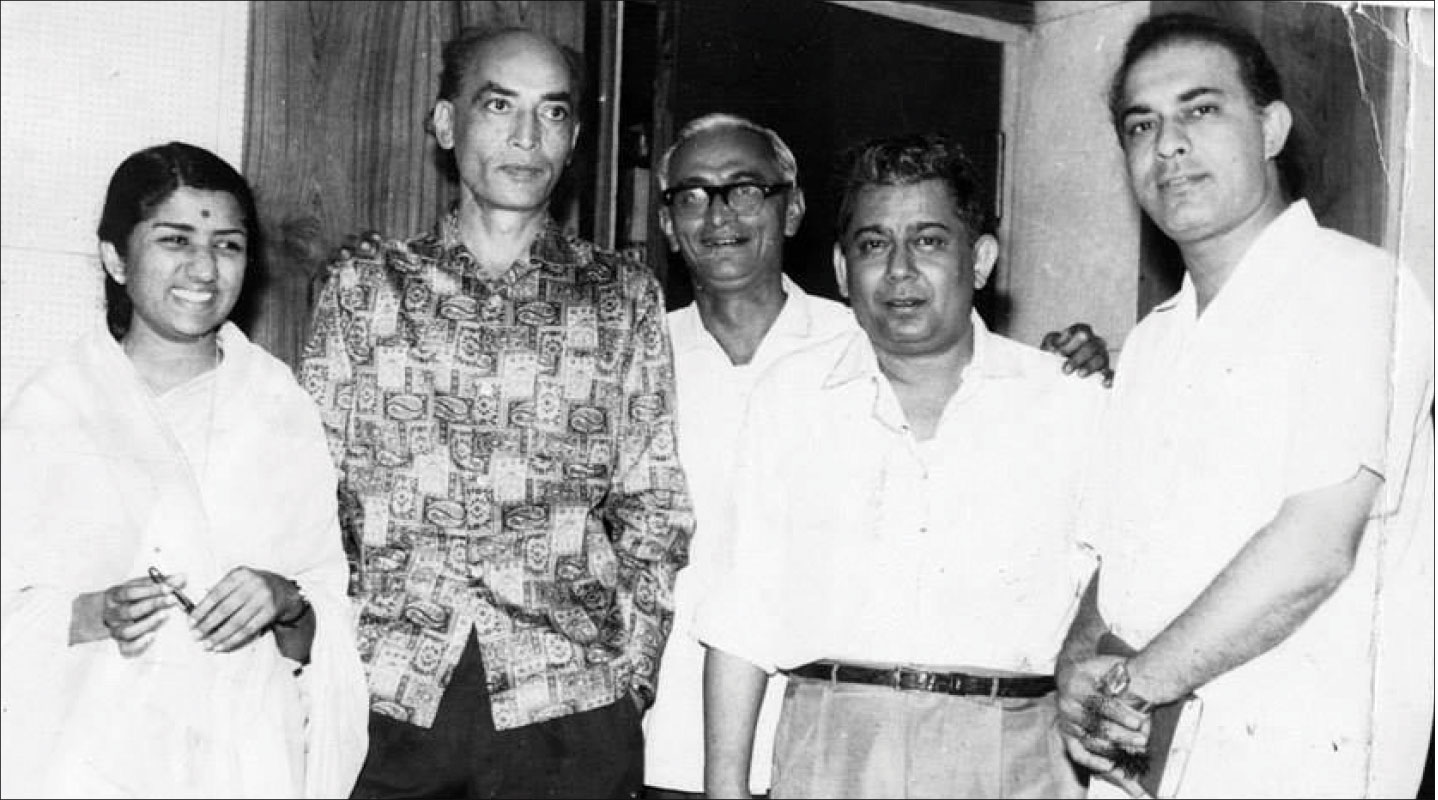
Mangeshkar’s company fell on bad days in the late 1930s, and he sought refuge in alcohol. He died at the age of 41 in 1942. Lata, at 13, became the breadwinner for a family of eight. Lata got a role in a Marathi film, as the heroine’s sister and had to sing three songs. She hated make-up and the arc lights, disliked crying or laughing on order, and only wanted to sing. But there was no option. “The day I went to work in that film, there was nothing to eat in the house,” she once recalled.
The next few years were a nightmarish struggle and drudgery. Lata sang and acted in four Hindi and four Marathi films. Composer Ghulam Haider introduced Lata to composer Naushad, who gave her the song Uthaye ja unke sitam in Andaz (1949), filmed on Nargis. The pathos-drenched song was irresistible and endearing and made the music world sit up and take notice.
In 1949, Barsaat with eight solos by Lata was released and she created a sensation. The wizardry of Shankar-Jaikishen and the Raj Kapoor-Nargis chemistry also worked magic. Mahal, released in 1949, was a trailblazer for both Lata and the film industry. The film was immortalised by the ghost song Ayega anewala, and Lata sounded ethereal. In fact she describes herself as a “bhootwali” singer. She has given cinema more ghost hits than anyone else.
Lata is the best antidote to regional chauvinism, because everyone from Kashmir to Kanyakumari loves her songs.
– Music maestro S D Burman
The 1950s and 1960s were Lata’s decades of triumph. The Lata juggernaut swept everybody else out. Shamshad Begum, the power voice of the 1940s, was sidelined, so were Amirbai Karnataki and Geeta Dutt. Asha Bhosle survived, thanks to O P Nayyar, her yen for peppy numbers, and Lata’s rifts with some composers. Lata was active in the three decades from the 1970s too, thanks to the new crop of composers such as Laxmikant-Pyarelal and Kalyanji-Anandji. Money flowed in from royalties and shows abroad. Lata sang in 2004 for Veer Zaara, a tribute to Madan Mohan produced by his son. She had completed more than 60 years as a playback singer, a world record for longevity.
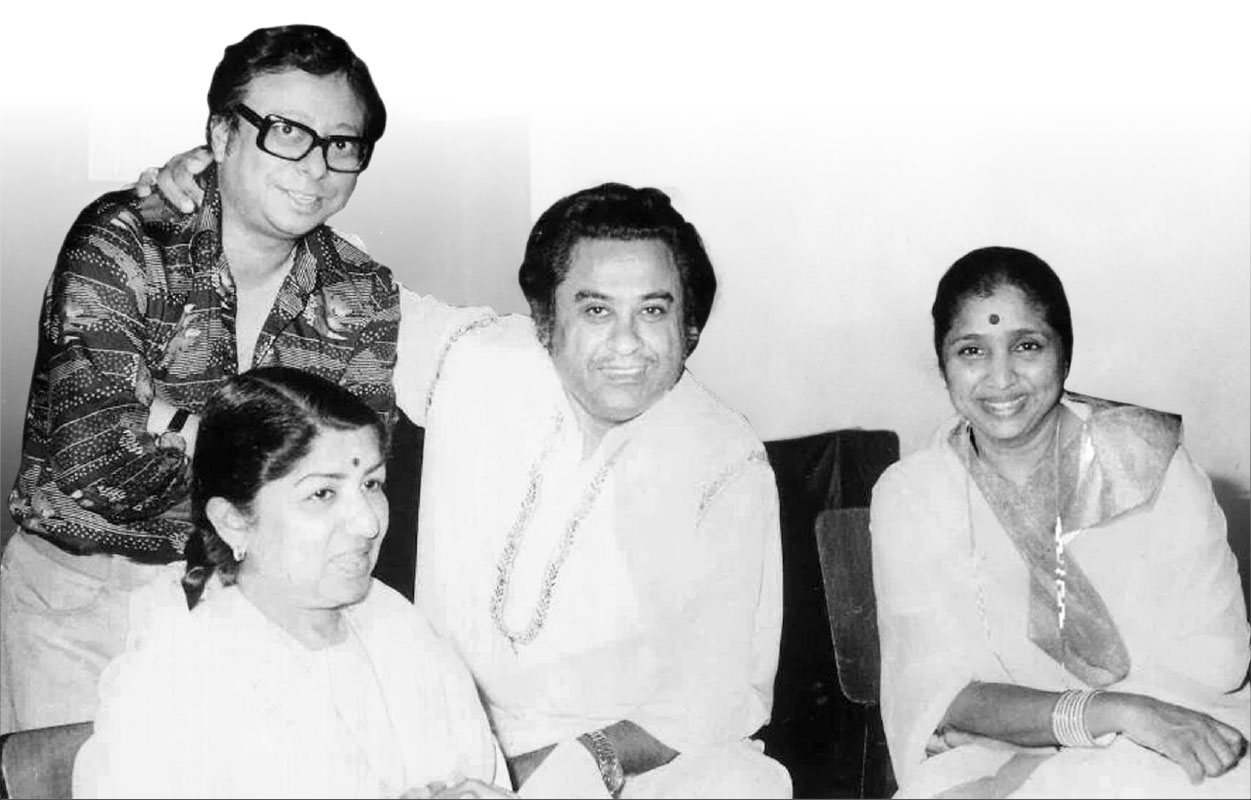
In 1962 she suffered from severe stomach ache and body pain, vomited green fluid and the doctor diagnosed it as slow food poisoning. Lata’s cook suddenly vanished, without even collecting his salary. The obvious inference was that the cook was someone’s plant.
Lata did not sing for a few months. The first time she sang after her illness was Kahin deep jale kahin dil for Bees Saal Baad. She was nervous and apprehensive, but composer Hemant Kumar was most understanding. The song was a super hit and won Lata her second Filmfare Award for best playback singer.
Lata and fellow singers
Lata had a beautiful relationship with Noor Jahan, the playback legend of the 1940s who migrated to Pakistan in 1947. They often met in London. The two singers would engage in long phone chats on the Bombay-Karachi line. Noor Jahan would ask Lata to sing some of her hit songs such as Dheere se aaja re, the immortal lullaby from Albela, one of his favourites. Phone operators in the two cities started eavesdropping to hear the two celebrities chat and sing!
When Lata first met Kishore Kumar, she thought he was stalking her! They were actually going to the same studio, taking a train and then a tonga. During briefing sessions before song recording, Kishore would throw Lata into fits of laughter with his jokes and clowning. He would even dance at the recording studio, and she pleaded with him to stop, so that she could sing right!
Mukesh is the singer Lata was closest to, and he persuaded her to accompany him on a concert tour of the US in 1976. But while in Detroit, he suffered a massive heart attack and died. A tearful Lata escorted his body back to Bombay.
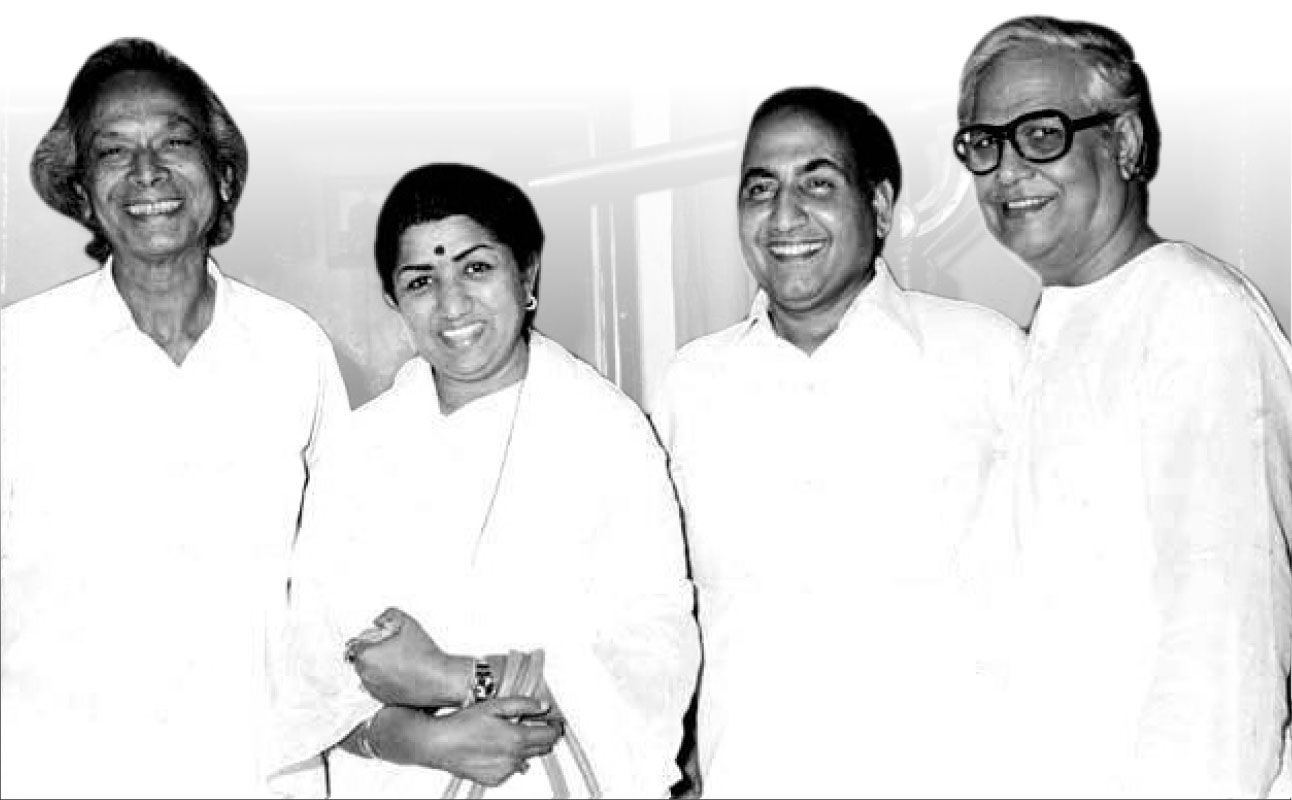
Among composers, Lata was closest to Madan Mohan. Her songs under his banner “had a special sweetness” as composer Khayyam put it. Take Baiyan na daro (Dastak), Hum pyar me jalne walon ko (Jailor), Woh bhooli dastan (Sanjog), Yun hasraton ke daag (Adalat), Aap ki nazron ne samjha (Anpadh), to mention just a few. Lata is all praise for Shankar-Jaikishen, saying they changed the attitude to playback singing with Barsaat. S D Burman regarded Lata as a daughter, R D Burman always treated her with great respect. She learned a lot from Naushad, and she adored Hemant Kumar, saying he sang like an angel because he was one!
Controversies
Lata Mangeshkar is more admired than loved in the film industry, with a prima donna reputation. The late Raj Singh
Dungarpur, who knew Lata well, said “If you rub her on the wrong side, she becomes a tigress.”
Lata could be a tigress even as a child. Her school life lasted just one day. On the second day, she had brought baby sister Asha to class and was singing with gusto while other girls cheered. The teacher pulled up Lata. She stormed out of the school, saying “How dare anyone scold the daughter of Pandit Deenanath Mangeshkar!”
The Lata juggernaut swept away everyone — Shamshad Begum was sidelined, so were Amirbai Karnataki and Geeta Dutt. Asha Bhosle survived, thanks to O P Nayyar, her yen for peppy numbers, and Lata’s rifts with some composers.
Lata denies that she has tried to undercut Asha. “She is my sister,” she points out. The two were estranged after Asha eloped with and married a neighbour. He wanted Asha to sever all her links with her family, particularly Lata! But as an abusive marriage, it broke up and Asha was back with didi.
Lata says Asha is more versatile than her; “I can’t sing the songs she did, like Piya tu ab to aaja or Chura liya, but she can sing both peppy numbers and classical ragas”.
She has had spats with singers, composers, directors and producers but has had her way most of the time. She fought aggressively for the rights of playback singers; broke with Mohammad Rafi after he referred to her as a “Maharani” while arguing about royalties and refused to sing for Raj Kapoor on the same issue. But later made up with both and went on to sing for the RK banner in Bobby.
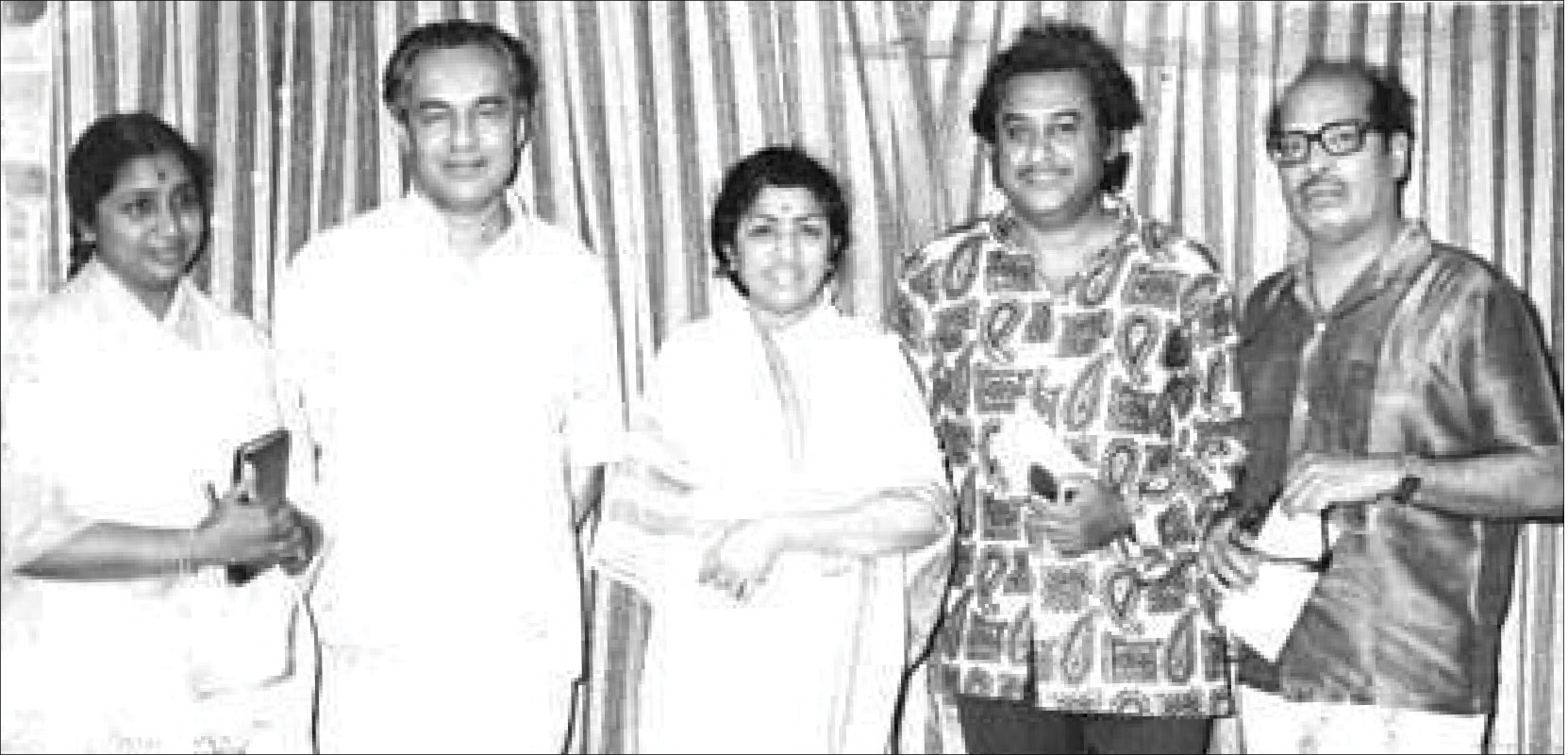
Shanker-Jaikishen played a big part in Lata’s success story: the titanic popularity of their songs for the Raj-Nargis movies of the 1950s merits a separate chapter in the history of Hindi film music. Lata’s pet tease was that SJ stood for “silver jubilee”. But in 1956, SJ won the Filmfare Award for best music for Chori Chori. Jaikishen asked Lata to sing the song Rasik balma from this film at the awards meet, but she refused, quipping that the award was for best composition and “I have not been given a best singer award.” She refused to relent though Jaikishen was a good friend. Result: Filmfare introduced an award for playback singers in 1958, and separate awards for male and female singers some years later.
Personal life
In her younger years, she travelled often to London and the US. A cricket buff, she regards Sachin Tendulkar as her own son, and watched the 1983 World Cup final in London. On return to India, she did a big charity show for cricketers. India’s cricket fraternity will do anything for Lata Mangeshkar.
Lata is fond of western classical music; she listens to Mozart, Beethoven, Tchaikovsky and Chopin. She admires Barbra Streisand, the Beatles and Nat King Cole. A remarkably good photographer, she enjoys cooking and loves good food, particularly Kolhapuri mutton. She simply can’t keep away from pickles though they aren’t supposed to be great for a singer’s voice.
Lata loves diamonds and white sarees. She is fond of fragrances; is very religious, prays every day and sometimes goes to the Mahalaxmi temple near her home on Peddar Road. She always appears barefoot on the stage or in the recording room. She is fabulously wealthy, but apart from her diamonds, lives unpretentiously. She has set up a hospital in Pune in the memory of her father.
Lata never got married, attributing the reason to the responsibilities she had to shoulder at a young age. When asked if she misses having children, she said: “My siblings’ children are my own.”
A versatile singer, Lata has sung in many other languages too.






